
How to Use SparkFun LilPad Protoboard Large: Examples, Pinouts, and Specs
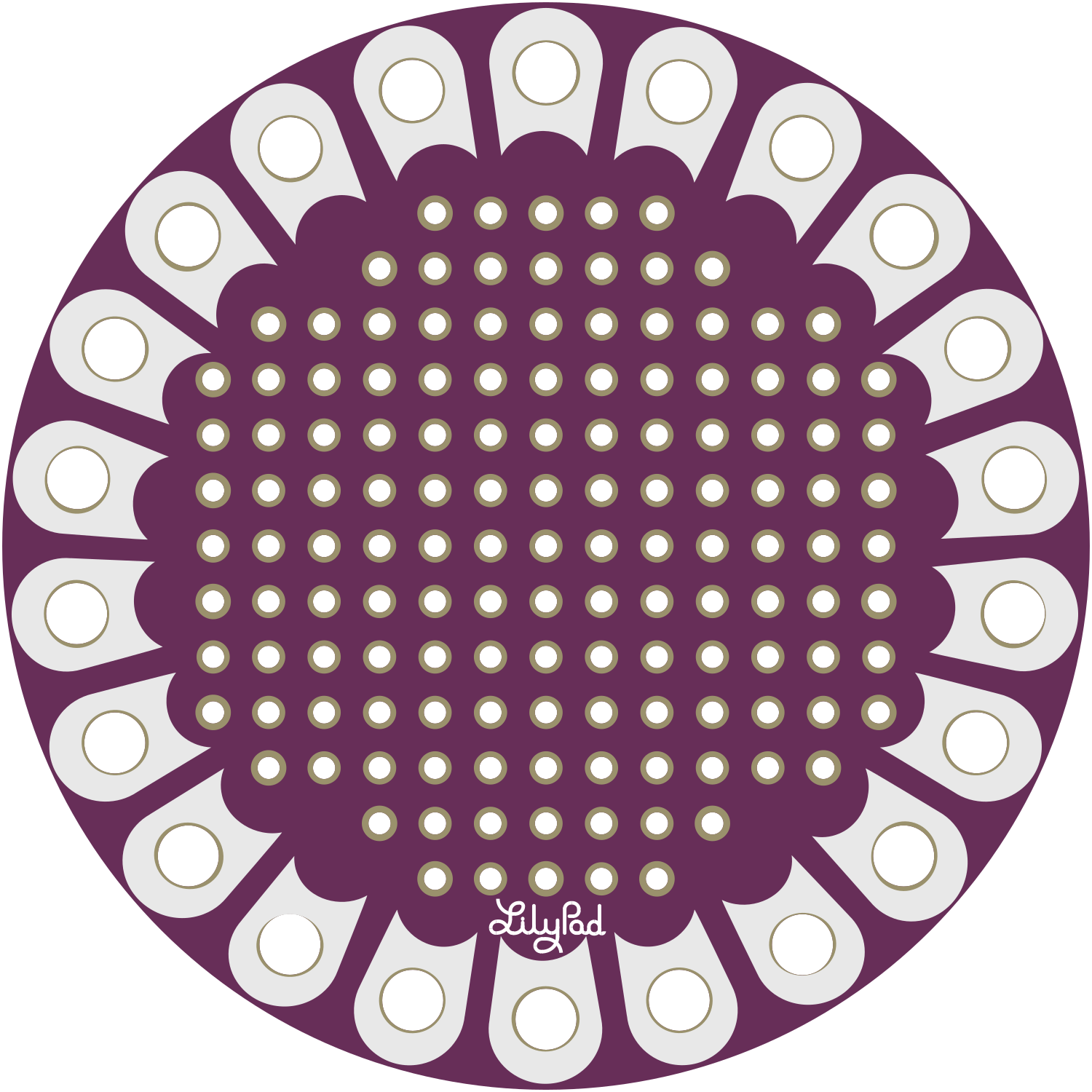
 Design with SparkFun LilPad Protoboard Large in Cirkit Designer
Design with SparkFun LilPad Protoboard Large in Cirkit DesignerIntroduction
The SparkFun LilyPad Protoboard Large is a versatile and user-friendly prototyping board tailored for the LilyPad Arduino platform. This board is ideal for hobbyists, designers, and engineers who are interested in creating wearable electronics and e-textiles. With its large prototyping surface, the LilyPad Protoboard allows for the integration of various electronic components, enabling the development of complex projects.
Explore Projects Built with SparkFun LilPad Protoboard Large
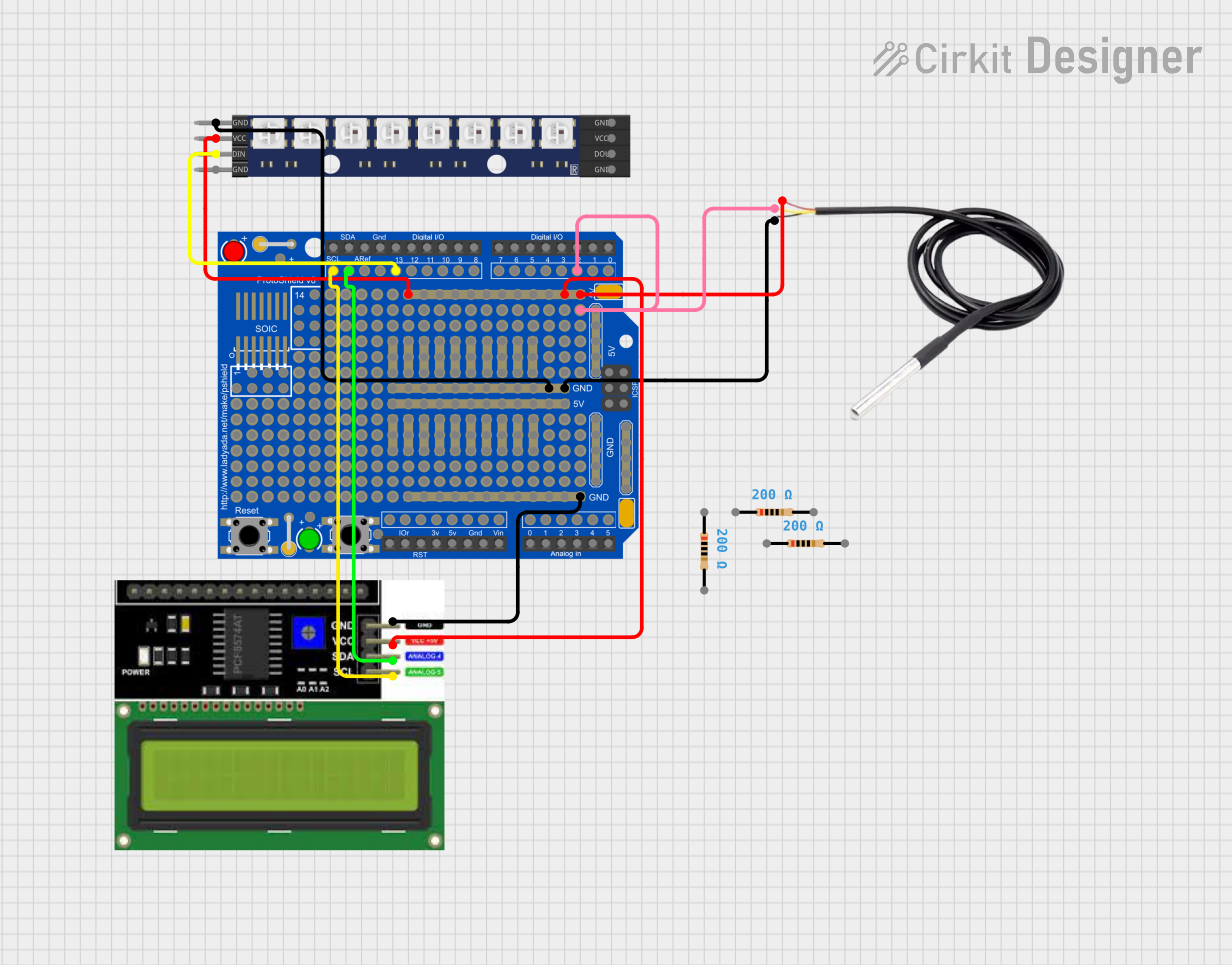
 Open Project in Cirkit Designer
Open Project in Cirkit Designer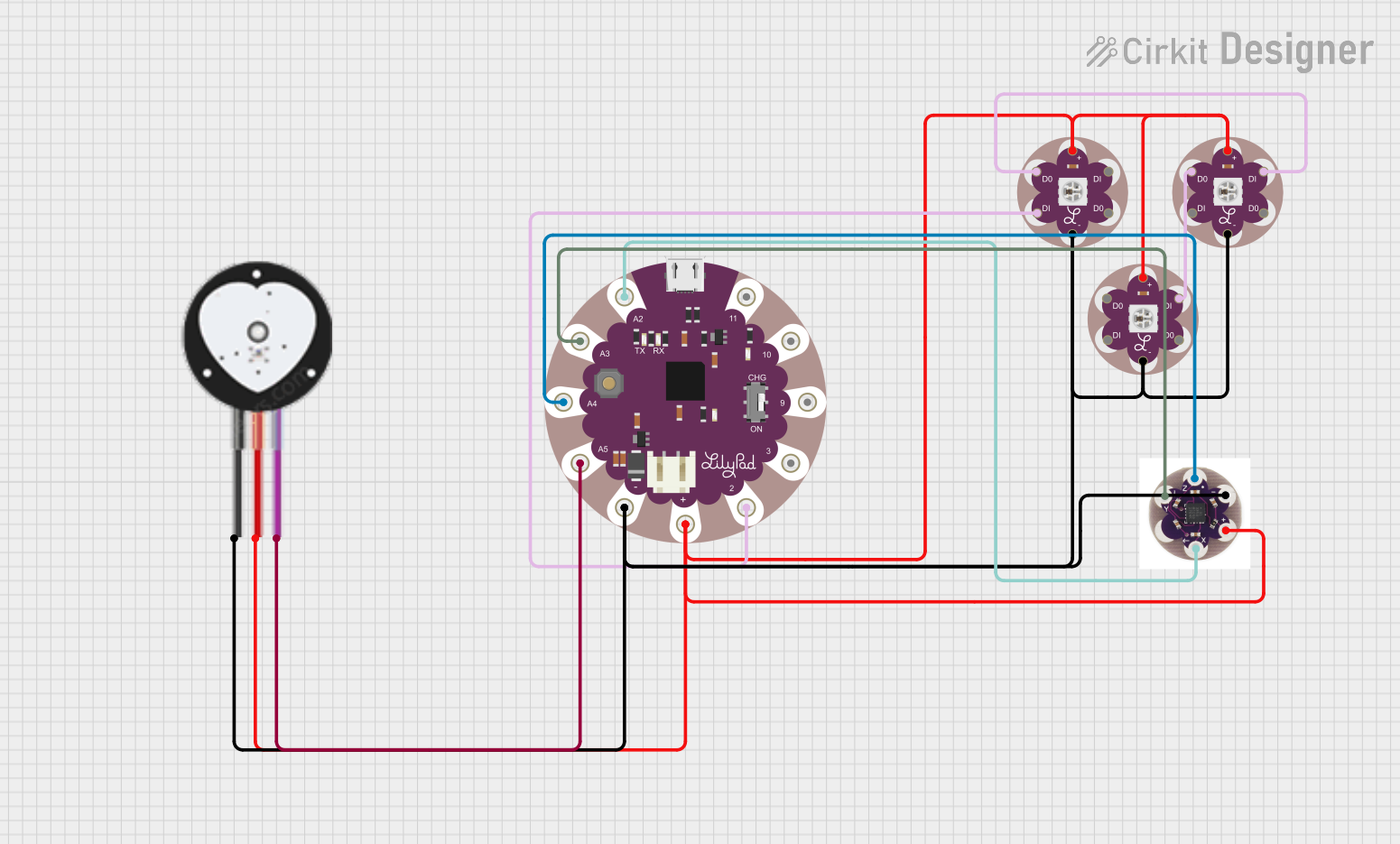
 Open Project in Cirkit Designer
Open Project in Cirkit Designer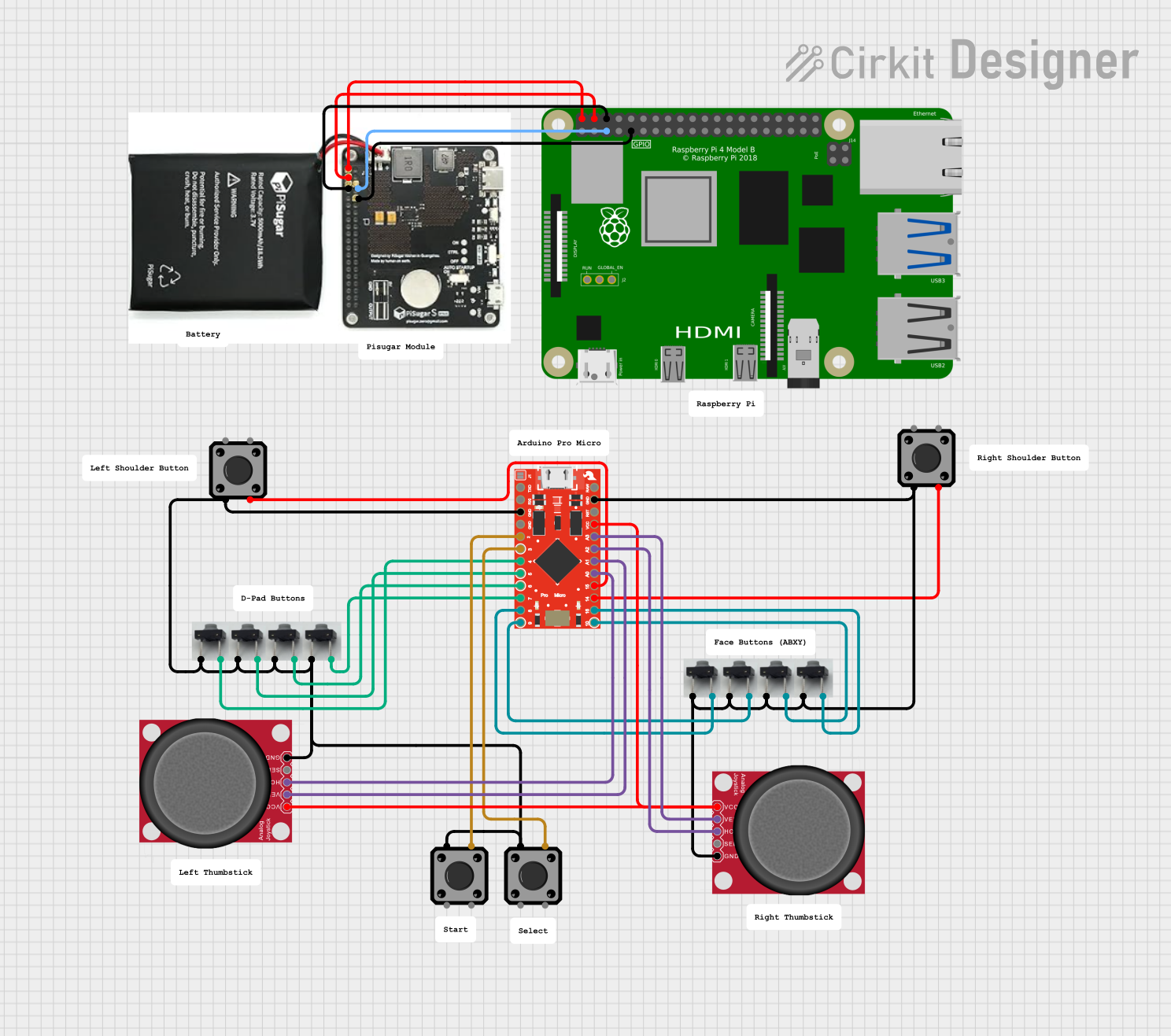
 Open Project in Cirkit Designer
Open Project in Cirkit Designer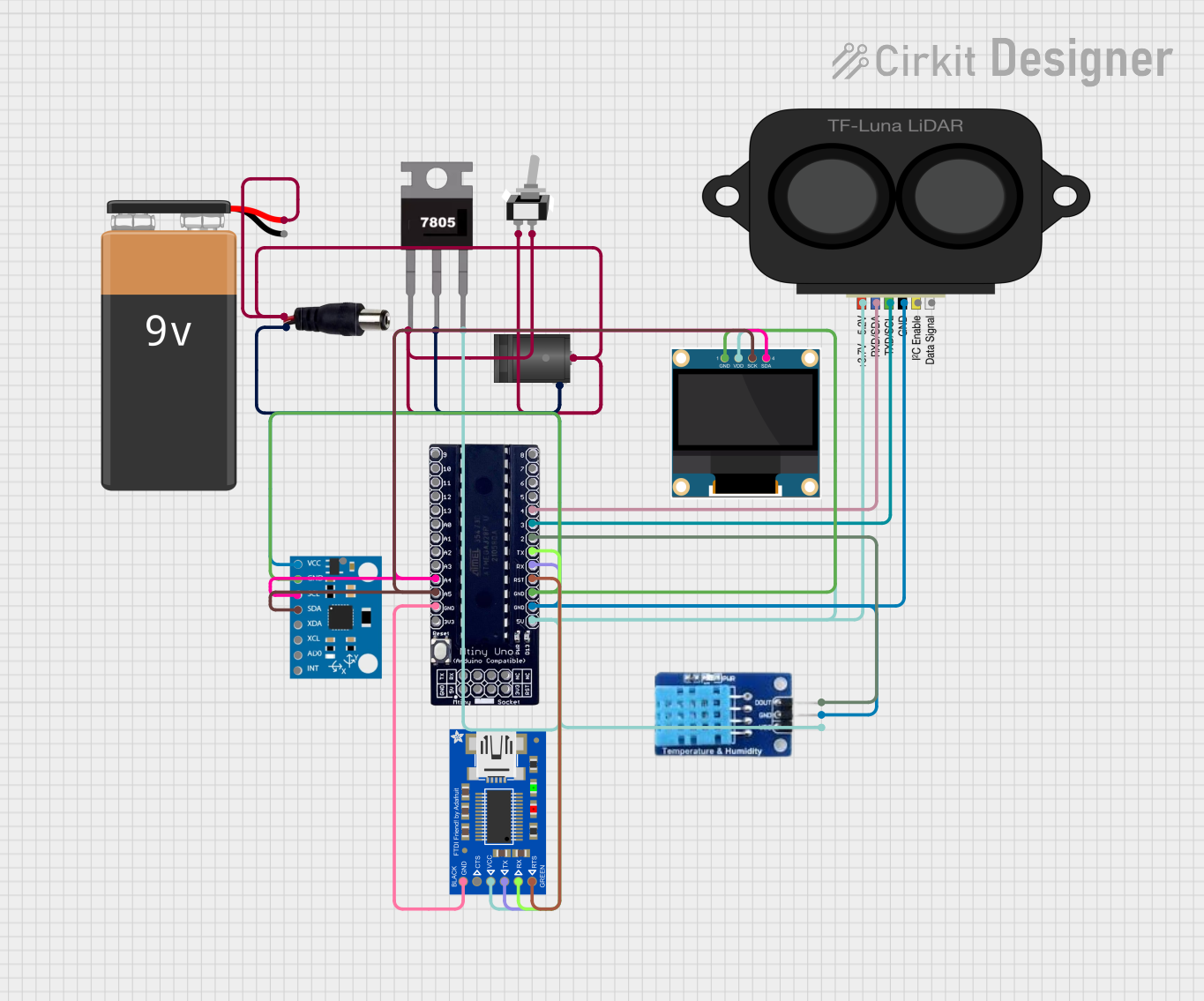
 Open Project in Cirkit Designer
Open Project in Cirkit DesignerExplore Projects Built with SparkFun LilPad Protoboard Large

 Open Project in Cirkit Designer
Open Project in Cirkit Designer
 Open Project in Cirkit Designer
Open Project in Cirkit Designer
 Open Project in Cirkit Designer
Open Project in Cirkit Designer
 Open Project in Cirkit Designer
Open Project in Cirkit DesignerCommon Applications and Use Cases
- Wearable electronics
- E-textile projects
- Educational purposes for learning electronics and circuit design
- Rapid prototyping of LilyPad-based designs
Technical Specifications
The LilyPad Protoboard Large is designed to accommodate a wide range of electronic components and interconnections. Below are the key technical details:
- Dimensions: 50mm outer diameter
- Material: High-quality, flexible PCB material
- Connection Points: Multiple sew tabs for easy connection to LilyPad components
Pin Configuration and Descriptions
| Pin Name | Description |
|---|---|
| VCC | Power supply input, typically +3.3V or +5V |
| GND | Ground connection |
| A0-A5 | Analog input pins |
| D2-D13 | Digital I/O pins |
| SDA/SCL | I2C communication pins |
| RX/TX | Serial communication pins |
Note: The pin names correspond to the typical LilyPad Arduino pinout.
Usage Instructions
Integrating with LilyPad Arduino
Powering the Protoboard:
- Connect a power source to the VCC and GND sew tabs.
- Ensure the power source matches the voltage requirements of the LilyPad Arduino.
Connecting Components:
- Use conductive thread to sew electronic components to the protoboard's sew tabs.
- Ensure that the connections are secure and that there are no short circuits.
Programming:
- Connect the LilyPad Arduino to your computer using an appropriate USB cable.
- Use the Arduino IDE to upload your code to the LilyPad Arduino.
Important Considerations and Best Practices
- Always disconnect the power source before sewing or unsoldering components.
- Avoid overlapping conductive thread paths to prevent short circuits.
- Test each connection with a multimeter before powering up the circuit.
- Use a needle designed for conductive thread to ensure strong connections.
Troubleshooting and FAQs
Common Issues
- Loose Connections: Ensure all sewn connections are tight and secure.
- Short Circuits: Check for overlapping conductive threads or exposed component leads.
- Power Issues: Verify that the power source is correctly connected and providing the appropriate voltage.
Solutions and Tips
- Strengthening Connections: Apply a small amount of clear nail polish over sewn connections to reinforce them.
- Isolating Threads: Use heat-shrink tubing or fabric patches to insulate areas where conductive threads may cross.
- Testing Components: Use a multimeter to test each component individually before integrating it into the circuit.
FAQs
Q: Can I wash my LilyPad Protoboard project? A: Yes, but you should remove the power source and ensure that the project is completely dry before repowering.
Q: What type of power source should I use? A: A coin cell battery or a rechargeable LiPo battery designed for wearables is recommended.
Q: How do I connect non-LilyPad components to the protoboard? A: Non-LilyPad components can be sewn or soldered to the protoboard if they are compatible with the power specifications and pinout.
Example Code for LilyPad Arduino
Here's a simple example of how to blink an LED using the LilyPad Arduino connected to the LilyPad Protoboard Large. This code assumes you have an LED connected to pin D13.
// Define the LED pin
const int ledPin = 13;
void setup() {
// Initialize the LED pin as an output
pinMode(ledPin, OUTPUT);
}
void loop() {
// Turn the LED on
digitalWrite(ledPin, HIGH);
// Wait for one second
delay(1000);
// Turn the LED off
digitalWrite(ledPin, LOW);
// Wait for one second
delay(1000);
}
Note: Ensure that the LED is connected with the correct polarity, with the positive side to D13 and the negative side to GND.
Remember to adhere to the 80-character line length limit for code comments, wrapping text as necessary. This example demonstrates proper comment wrapping and clear, concise instructions for a simple operation.